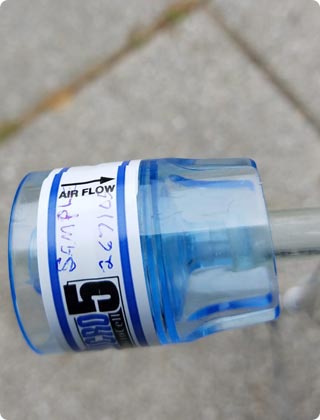
Mold Inspection VS Mold Testing: What is the Difference?
You have perceived that odd smell for a while now. You wonder, is it mold? Yes, it could be. If you have just moved into a new building or experienced a flood, the possibility of mold growth is high.
But what do you do? You need to be sure, right? You take to the internet to look for solutions, and the confusion starts. What is the difference between mold testing and mold inspection? Do you have to do both? You do not have to continue wondering. This article explains all you need to know.
What Is Mold Testing?
Mold testing is the procedure whereby air or surface probes help figure out the type of mold. It is also called mold sampling. While there are home mold test kits, you need to understand that these kits are unreliable. You need a licensed mold testing laboratory for proper testing and analysis.
But when should you carry out mold testing? Professionals usually recommend you consider testing when you have seen signs of mold. For instance, you are not sure if that stain on the wall is black mold or just a black stain. Mold sampling would help you find what it is for sure.
There are two different methods used for mold testing. It is either you use air samples or surface samples to find mold spores. What is air sampling and surface sampling, and what differentiates them from each other?
Air Sampling
This mold testing method involves collecting samples of the air in the building and learning about the mold spores present. There are different collection devices (spore trap) used in this sampling process to pump the air. There are impaction samplers, airborne-particle collectors, and cassette samplers.
The laboratory processes the air samples taken by these devices and analyzes for concentration of mold and the type of mold present. Air sampling alone is not enough to help you figure out your mold problem, though. Many factors can affect the air quality in your home or office, making the results of the sampling inaccurate. That is why you need experts for it.
Professionally-taken air samples help you know the difference between the particles in a mold-free area and a problematic one. You can also do it before and after mold remediation.
Surface Sampling
Surface sampling involves testing the surfaces in your room or office for mold. Professionals use different methods to get a correct sample of the population and type of mold on a surface. The process can use tapes, swabs, wipes, or bagging some of the surfaces for testing in the laboratory.
You should note that a surface sampling culture collected might not help you fully understand the extent of mold growth. You need a direct microscopic examination to learn that. Surface samples help you know if it is mold and how it is growing.
Finding mold on a surface in your home does not show the extent of mold in your home. It would also not help you figure out other places where mold growth might have occurred.
However, professional mold testing companies can combine both types of testing samples to find the extent of mold growth, based on your needs. Yet, mold testing does not answer questions like why the mold is growing in that place, what you can do to stop it, and so on. You need a mold inspector to answer those questions.
What Is Mold Inspection?
Mold Inspection, also known as mold assessment, is the procedure whereby a mold expert or inspector searches for evidence of mold growth and its cause. Inspectors usually look for past evidence of mold growth to learn the reason for present growth.
Mold inspection often includes mold testing, but it is more than just testing. Assessment of your office's moisture and humidity levels, isolated places in your building, and water-damaged or problem areas are part of the process. You might want to know the specific steps that a mold inspector should take in your home or office during an inspection.
What Happens During A Mold Inspection?
Some people might have told you that a mold inspection is unnecessary if you can already see the mold. However, you still do not know about the others in hidden places. The most effective step is to get a mold inspection before mold remediation. So, what does a mold inspector do at a mold inspection?
Evaluation Survey
You need to be present to receive the mold inspector because the first point of call is to ask you a few questions about your building. If you have seen any mold or perceived any suspicious odors, tell the inspector. Your answers will help the inspector know problem areas like an active leak to check out first.
Visual Inspection
The next step is a physical evaluation. The inspector checks all areas that water or fungus can access. This is a non-invasive inspection. A mold expert would also examine the temperature and humidity levels in your home.
Mold Testing
A mold testing is an optional part of the process. However, some states need it by law. A test will help the inspector know the types of mold growing in your house, whether they are toxic black mold or not. You can also check the airborne mold spores in your home.
The mold testing versus mold inspection question should be clear to you now. If you suspect a mold problem in your home or office, you should get a full mold inspection that includes mold testing.
Are you wondering where you can get excellent mold inspection service? Or you want to do mold testing? Wherever you are searching for mold inspection near me, O2 Mold Testing is the answer for you.
We have experienced inspectors and make use of the best modern equipment in our mold inspection process. Whatever you want to do, from air/surface probes, laboratory testing to visual inspection, O2 Mold Testing can help you. You do not have to live with hidden mold when there is a professional solution. Call us today!


